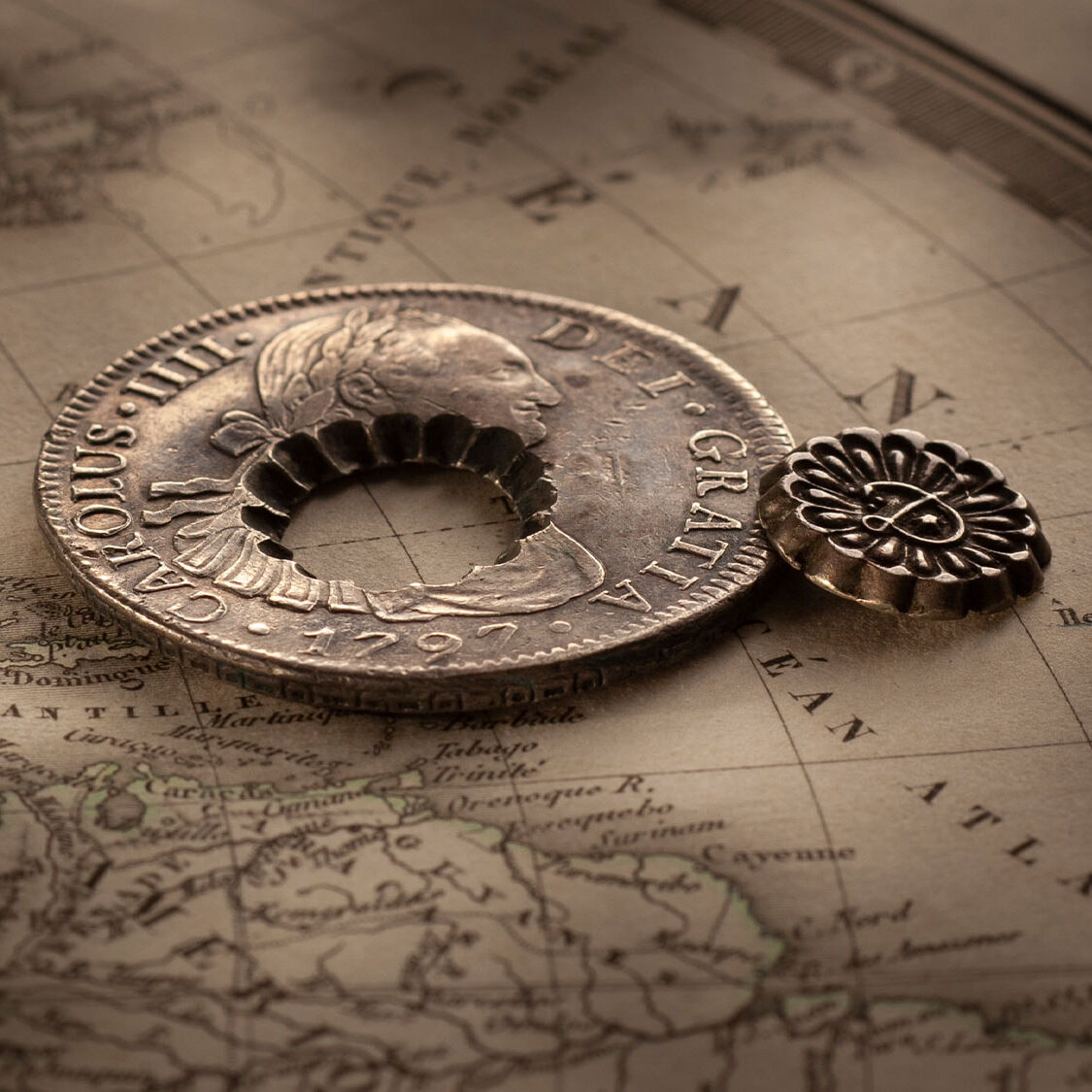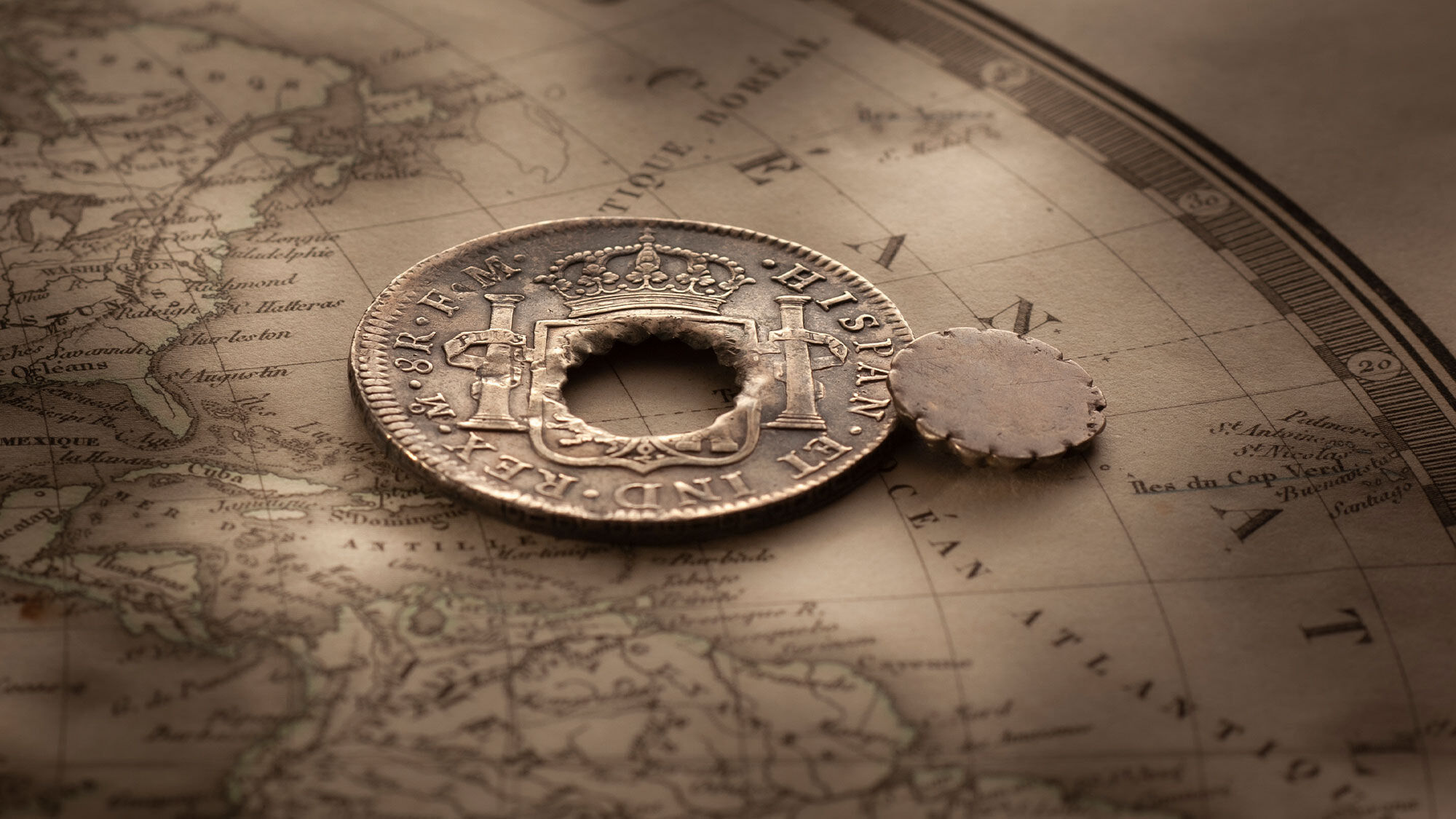1798 Holey Dollar struck from a 1797 Mexico Mint Spanish Silver Dollar And 1798 Dump. Both issued by the British Colony of Dominica.


The Spanish Silver Dollar. The coin that ruled the world.
Beginning with Columbus in 1492 and continuing for nearly 350 years, Spain conquered and settled most of South America, the Caribbean, and the south west of America.
It was however, the silver rich continent of South America that became Spain’s treasure trove, bank rolling its ascendancy as a world power.
In 1536, Spain established its first colonial mint in Mexico. It was by far the most lucrative of the Spanish mints, coining more than 2 billion dollars’ worth of silver pieces over a 300 year period (1536 – 1821). The Lima and Potosi Mint came on board in 1568 and 1573 respectively.
Not only were the Spanish mint’s prolific but the monarchy in 1537 introduced exacting standards of weight and purity into its coinage. (A diameter of 39mm and a weight of 27.70 grams of pure silver.)
That clever move resulted in worldwide dominance of the Spanish Silver Dollar and its ultimate acceptance as an international currency and medium of exchange.
History of Dominica
Dominica is a Caribbean Island. First sighted by Christopher Columbus in 1493, later colonized by the French in the 17th century and a British colony one century later.
Between 1642 and 1650, French missionary Raymond Breton became the first regular European visitor to the island.
In 1660, the French and English agreed that Dominica and St. Vincent should not be settled, but left to the Caribs as neutral territory. But its natural resources attracted expeditions of English and French foresters, who began harvesting timber.
In 1690, the French established their first permanent settlements. French woodcutters from Martinique and Guadeloupe began to set up timber camps to supply the French islands with wood and gradually become permanent settlers.
In 1727, the first French commander, M. Le Grand, took charge of the island with a basic French government; Dominique formally became a colony of France, and the island was divided into districts or "quarters".
Already installed in Martinique and Guadeloupe and cultivating sugarcane, the French gradually developed plantations in Dominica for coffee. They imported so many African slaves to fill the labour demands that the population became predominantly African in ethnicity.
In 1761, during the Seven Years' War in Europe, a British expedition against Dominica led by Andrew Rollo conquered the island along with several other Caribbean islands. In 1763, France ceded the island to Great Britain under the Treaty of Paris.
The same year, the British established a legislative assembly, representing only European colonists. French remained the official language, but Antillean Creole was spoken by most of the population. In 1778 the French, with the active co-operation of the population, began the Invasion of Dominica, which was ended by the 1783 Treaty of Paris. French invasions in 1795 and 1805 ended in failure.
© Copyright: Coinworks
